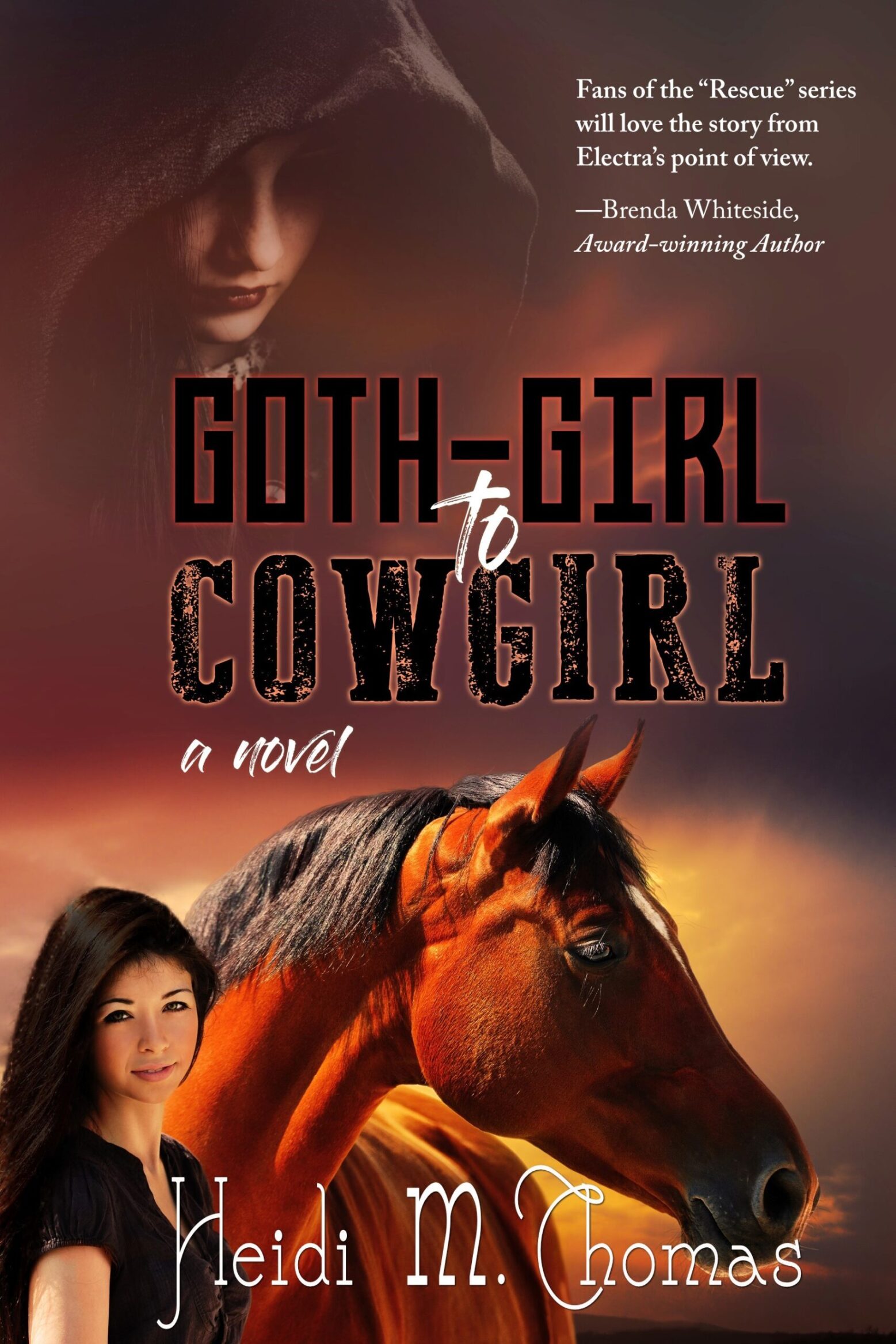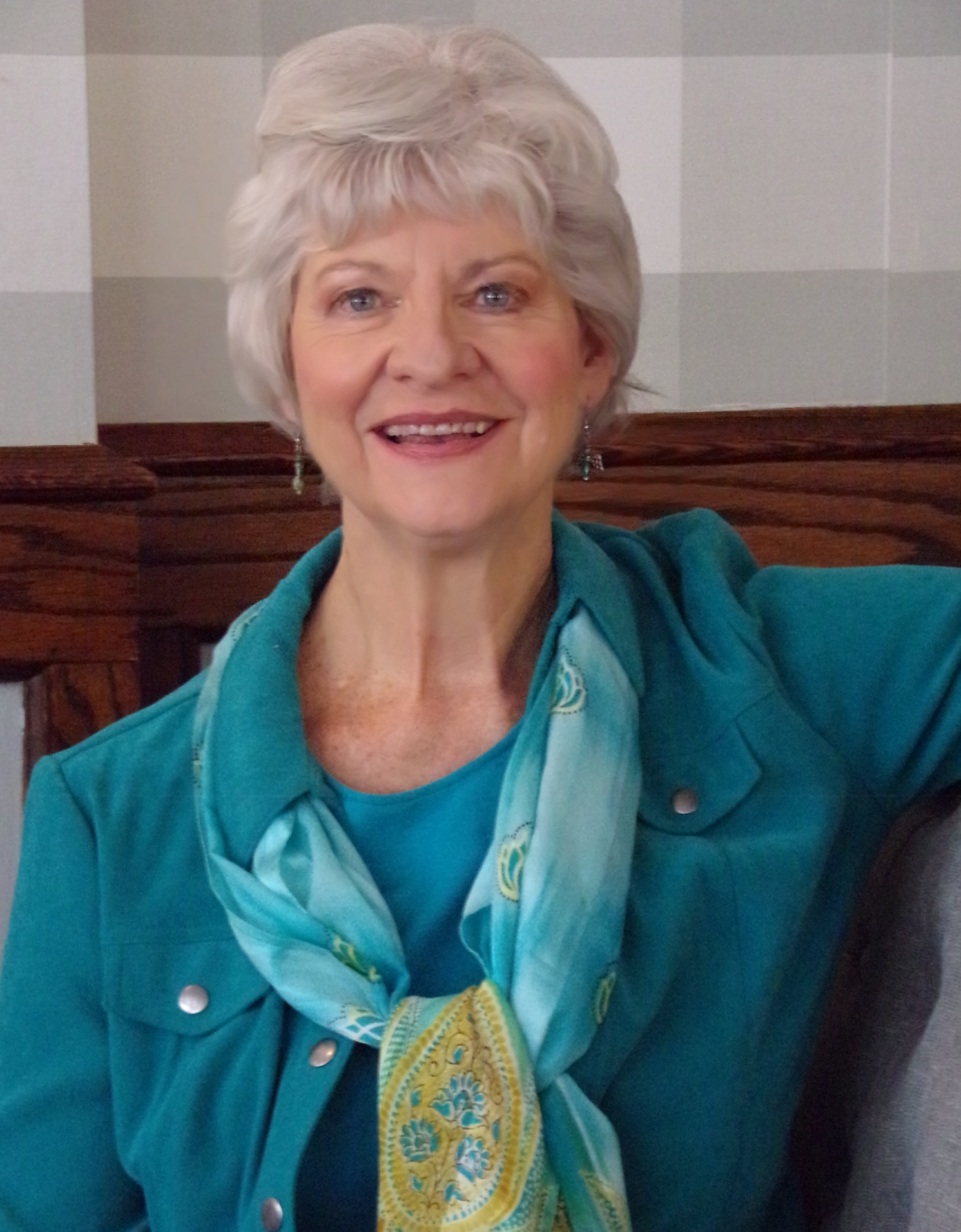Welcome, Heidi Thomas, to Writer Wednesday on Birds, Books, and Banter
I’m excited to have Heidi Thomas as a guest on Birds, Books, and Banter. I love her Samantha Moser books. Her latest book, Goth-girl to Cowgirl, is a spinoff from the Moser trilogy. Read our interview and learn more about Heidi and her books. She also offers writers some great advice.

- What do you and your protagonist have in common? We both love rural ranch life and believe in preserving it. We are both strong, independent women, but have doubts and failures at times in our lives. (This can apply to all my protagonists, I think.)
- How long have you been writing? Since I could form letters as a child.
- What was the motivating factor that got you started? My parents read to me from an early age, which instilled in me my love of books. I wanted to learn to read and write on my own so badly. In our isolated area, there were no other school-age kids, so there was no school close by. My parents ordered some pre-primers and taught me at home. Then, after I’d turned six, a family with four children moved into the area, and then we had a school.
- What do you want most for your readers to come away with after they read your books? Enjoyment. A sense of the environment and ranch lifestyle, and to be able to identify with my characters, whether or not they’ve lived on a ranch—of “being there.”
- 5. What is the last book you read purely for pleasure? The Giver of Stars by Jojo Moyes. What was the oddest job you ever had? Not so odd for a ranch girl, but I baled hay and stacked bales during the summers.
- Tell us about your latest book. My latest published book is Goth-girl to Cowgirl. This is the rescue story from the Samantha Moser trilogy, told from the POV of the character Electra. She is a troubled teen who was mentored by Sam and found healing through her and the love of a horse. Saving the Prairie is my WIP. It features a young ranch woman whose dad is diagnosed with Alzheimer’s and leaves her to run the ranch. She is faced with a fight against the encroachment of the American Prairie Reserve, a large non-profit conglomerate that is buying up millions of acres of ranch and farmland to create a huge bison reserve in Montana.
- How many books do you read in a typical month? Do you read in your genre while you are writing? I’ve always been a voracious reader and probably read one a week. I do read in my genre but also explore different ones as well.
- What themes do you regularly employ in your writing? Finding one’s strength, coming to rely on faith, and redemption/healing.
- What is the most challenging area for you as a writer? Deep character emotion. It’s a lot of work to “show” the emotion without using cliches or trite phrases or without simply “telling.”
- How did you develop the idea for your most recent work? Saving the Prairie came from a minor character mentioned in the “Rescue” series.
- What was the best writing advice you ever received, and why was it valuable? This is something I try to emphasize to other writers in classes I’ve taught or in my critique groups. “Just get it down on paper. Don’t worry about the rules. You can always go back and rewrite.” I think this advice comes from Annie Lamott, and I also love a quote attributed to Hemingway, “There are no great writers, only great rewriters.”

Award-winning Heidi M. Thomas grew up on a working ranch in eastern Montana. She followed her dream of writing with a journalism degree from the University of Montana. Heidi is the author of the “Cowgirl Dreams” novel series (based on her rodeo cowgirl grandmother) and Cowgirl Up: A History of Rodeo Women and has received two WILLA Literary Awards and four Will Rogers Medallion awards, among others.
Seeking the American Dream and Finding True Home are based on her mother, who emigrated from Germany after WWII. Rescuing Samantha, Rescuing Hope, and Rescue Ranch Rising continue the Moser family saga, with the great-granddaughter of Nettie, the original cowgirl character. Goth-girl to Cowgirl is the “Rescue” story from teen character Electra’s POV. Heidi lives in Chino Valley, where she writes and works as a freelance editor. She is a member of Arizona Authors, Professional Writers of Prescott, and Women Writing the West.
Links http://www.heidimthomas.com Amazon.com: Heidi M. Thomas: books, biography, latest update

